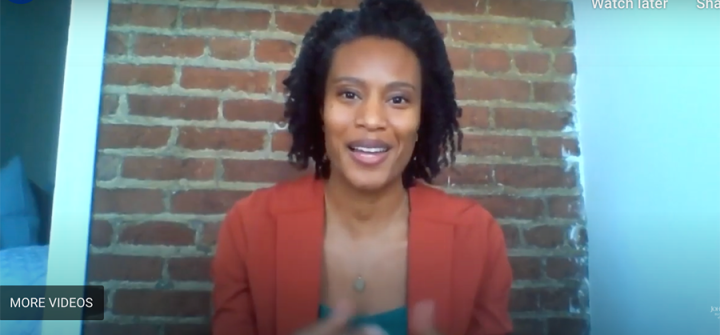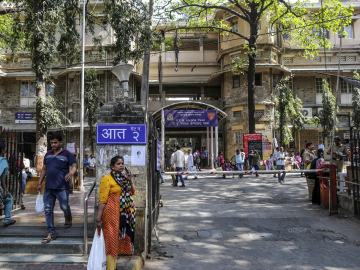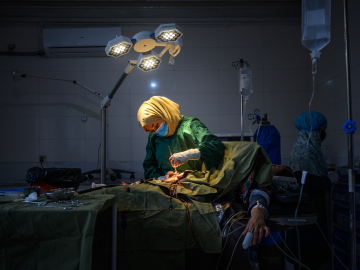To Get Ahead of COVID-19, the Biden Team Will Follow the Science
Editor’s Note: This is the first of an occasional GHN series examining the health challenges that the new Biden administration must confront in its first 100 days.
The incoming Biden administration promises a vigorous, across-the-board reboot of the failed US response to COVID-19—from vaccine distribution to mental health, 2 members of his coronavirus advisory board said during a Thursday webcast from the Johns Hopkins Bloomberg School of Public Health.
Evidence, public health professionals and scientists will direct the new administration’s efforts. “The Biden brand, so to speak, is to follow the science,” said advisory board member Celine Gounder, MD, ScM, a clinical assistant professor at New York University's Grossman School of Medicine and physician at Bellevue Hospital Center.
Perhaps the most pressing issue in facing President-elect Joe Biden’s team is vaccine distribution. Simplifying vaccine distribution—including the tiers of eligibility—and accelerating the pace are top-of-list priorities for the new administration, Gounder said.
Ramping up vaccination, she said, comes from the reality that ~4,000 Americans are dying of the coronavirus every day. “That’s more than died on 9/11. Every day,” she said. “And it is unacceptable for Americans to be dying at that rate.”
Biden has set an ambitious goal of distributing 100 million doses in his first 100 days. Asked how realistic that is, Gounder cited former CDC director and smallpox eradication effort hero Bill Foege—he “said the greatest risk of public health is fatalism, skepticism, and pessimism.”
The incoming administration has also pledged not to withhold large numbers of vaccines for second doses but, instead, to release nearly all available doses. (The Trump administration reversed course on Tuesday and announced it would follow the same strategy.) The decision means second doses for many people could fall sometime after the ideal interims (21 days for the second Pfizer shot and 28 days for the second Moderna jab). Some public health experts have questioned the strategy.
“We're going to be releasing nearly all with a small buffer leftover because we, we want to accelerate the pace at which vaccination is going,” Gounder said. “Barring some major manufacturing snafu, we're really not worried about second doses being delivered on time.”
One of the challenges of the vaccine rollout is a mix of extremely high demand that’s sparked line-jumping and a deep hesitancy about getting vaccinated in some areas, especially in marginalized communities and communities of color.
Addressing that hesitancy—along with a range of issues related to equity—will be a particular priority, said advisory board member Loyce Pace, MPH, the president and executive director of the Global Health Council.
Public health and medical officials first need to understand where those concerns arise, Pace said. “These communities have a good reason not to trust our health care system, and some of our government officials, unfortunately, and so we need to be mindful of that history and look broadly at how people have or have not been served by our public health system in this country,” Pace said. “We do absolutely want people to line up when their time comes, because we know that critical component to getting on the other side of this crisis.”
Other ways the administration will ensure equity: Locate vaccination facilities in communities that are more vulnerable, and recruit vaccine providers from those communities. Gounder highlighted Baltimore health commissioner Letitia Dzirasa’s leadership in ensuring that community health care workers staffing vaccination and contact tracing efforts include members of vulnerable, affected communities as an example: “It is a way of creating jobs, of creating buy-in from the community in another way that addresses the structural inequities … and just having somebody they trust on the frontlines delivering these services,” Gounder said.
It’s also important to protect public health workers, she said, from unrealistic expectations that they will be able to police efforts such as line-jumpers, noting, “I think it's really important to understand what the job of public health officials is. It is not to shame people; it is not to blame people. It is not to police,” she said.
Other key issues discussed during the webcast:
- The nearly year-long COVID-19 crisis with deaths, lockdowns, job losses, and other fallout has sapped people’s resilience and dramatically affected many Americans’ mental health. The impact of which may not yet be realized for months or even years. “We talked about .. physical after-effects, but also they're very real mental aspects … that we absolutely want to ensure are addressed and so that's why we have to sort of walk and chew gum at the same time, ensure people are getting supplies that they need and ensure that we are really addressing the need and response,” Pace said.
- With new, more transmissible variants threatening to further strain hospitals (many of which are beyond capacity and already rationing care), the new administration is also recommending greater focus on genomic surveillance to map the variants against the vaccines and treatments that we have available, Gounder said, noting that another priority will be thinking about other therapies, other antivirals. “That's why it's so critically important to stay ahead of the way the virus is shifting … so that we can be ready to also innovate to also evolve with the virus itself. But the good news, also, is the public health principles that we all know and love still work, and they still matter,” including masking, limiting contact, and washing hands.
- COVID-19 science is changing day by day. “Adjusting as we go doesn't mean that the truth is shifting, it just means our understanding of the situation is shifting, and we're adapting and that's really a scientific approach,” Gounder said.
- A longer-term priority, according to Pace, is rebuilding the public health infrastructure, “recognizing how taxed our clinics and communities have been as a result of COVID-19.
- The US cannot be focused solely on COVID-19 cases within its borders. “It’s critical to us that the US is planning to re-engage with the World Health Organization and realign itself with other countries around the world trying to solve these problems collectively,” Pace said. “We can't do this alone, I think we we've learned that over the past 10 months, hopefully, and ideally we'll be able to lock arms with those countries and get through this together.”
A recording of the webcast “Rethinking the U.S. COVID-19 Response,” is available here. The webcast was sponsored by the Bloomberg School’s Alumni Relations team and moderated by Global Health NOW editor-in-chief Brian W. Simpson.
For the latest, most reliable COVID-19 insights from some of the world’s most respected global health experts, see Global Health NOW’s COVID-19 Expert Reality Check.
Join the 50,000+ subscribers in 170+ countries who rely on Global Health NOW summaries and exclusive articles for the latest public health news. Sign up for our free weekday enewsletter, and please share the link with friends and colleagues: https://www.globalhealthnow.org/subscribe
Loyce Pace, a Biden COVID-19 advisory board member, speaking on a January 14, 2021 webcast.





